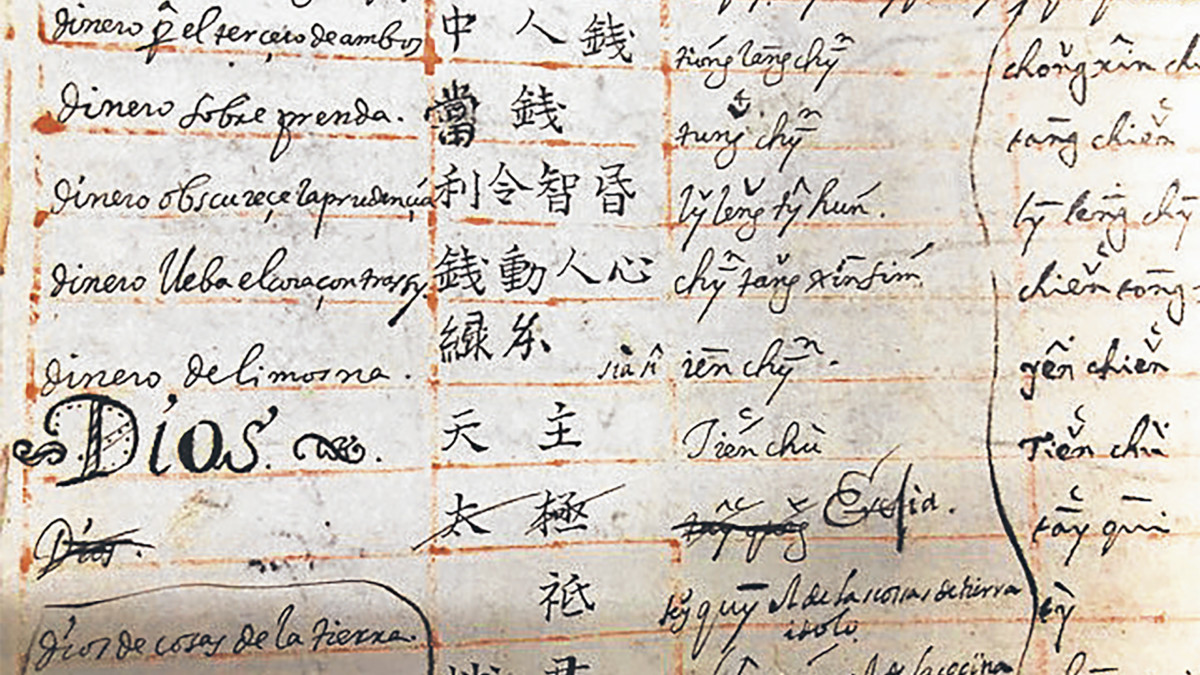Extraordinary Spanish/Chinese Dictionary Uncovered in University Archives
Spanish and Taiwanese scholars have discovered the world’s oldest extant and largest Spanish-Chinese dictionary at the University of Santo Tomas (UST) Archives. Founded in 1611 by the Dominicans, UST is the oldest university in Asia.
UST ecclesiastical historian Regalado Trota Jose linked the dictionary to the Spanish occupation of Taiwan between 1626 and 1642.
‘Vale muy poco’—‘of little value’
The 400-year-old “Dictionario Hispanico Sinicum” (DHS) provides not only the Chinese characters and Mandarin terms to Spanish words but also their equivalent in Hokkien, the language spoken in Taiwan and Fujian province in China where many of today’s overseas Chinese populations came from.
Ironically, the dictionary was discovered in the archives with the label, “vale muy poco,” that is, “of little value” for contemporary use.
“Nothing could be further from the truth,” said Henning Klotter of Humboldt University in Berlin. He went on to explain that the DHS is “the most comprehensive collection of Hokkien lexical items” of its time. “[H]istorians will [also] find a wealth of information on the early history of the Spanish-Chinese encounter in the Philippines.”
A glimpse of other languages
The discovery is seen by scholars and cultural campaigners as helping offset the Mandarin-only policy currently enforced by the Chinese Communist Party. Critics call this suppression of all other languages a form of cultural genocide as directed against regional languages and communities such as the Cantonese in Hong Kong and Guangzhou.
Exciting new perspectives
Jose said that the DHS affords us “imperfect glimpses of what the Spaniards, Fujianese, Taiwanese and Tagalogs encountered with each other and among themselves.” For example, it “…contains Tagalog words, such as “arigue” (house post), “bahaque” (G-string), “camanguian” (incense), “mabolo” (a fruit), “paypay” (fan), “tangingue” (a fish), and “vilango” (prisoner).”
“In addition to the broadness of content, the most valuable part of these Hokkien-Spanish documents is the authorship,” said Yi Long-hua of NTHU. “Most works that resulted from Sino-Western interactions were usually written by Europeans from their perspectives… Hokkien-Spanish dictionaries coedited by both communities provide an exciting new avenue of inquiry.”
This dictionary was unearthed by Fabio Yu-Chung Lee from National Tsing-Hua University (NTHU) in Taiwan and José Luis Caño Ortigosa from the Universidad de Sevilla, as they were researching in the archives.
They argue that it should be included in UNESCO’s the Memory of the World project:
“[DHS] is a rare material that could verify the close ties between Hokkien migrants, Spaniards and Filipinos in the 17th century,” the scholars said. “It possesses extraordinary research value, and its significance matches the standards of the Unesco Memory of the World project. [It is an] asset that integrated the linguistic wisdom of the Hokkien, Spanish and Filipino peoples.”
Source: World’s oldest and largest Spanish-Chinese dictionary found in UST
Please Support us on Patreon!
 The minimum level of contribution is only $1 per month.
The minimum level of contribution is only $1 per month.
Moreover, starting with the pledge level of $3, you will get a digitized vintage book about bookbinding, book history, or book arts each month from us!
These pledges help iBookBinding to continue its work and bring more information about bookbinding and book arts to you!


